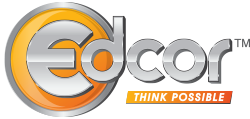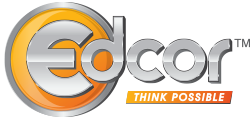The cost of education is a major financial burden on many families. On one hand, the wage gap between degree and non-degree holders is widening and on the other, the cost of education is again rising in the year 2022-23 after the tuition freezes during the pandemic. Unsurprisingly, post-secondary school enrollments decreased by more than a million since COVID started, and continue to decline. More and more students are choosing not to go to college due to the ever-increasing costs and the burden of looming student loan debts. If continued, this trend will lead to a huge socio-economic disparity between degree and non-degree holders. As an education benefit, scholarships help alleviate this financial load by reducing the ticket price of a degree. With the heightened emphasis on upskilling and the so-called Great reshuffle, there is no better time than now to include scholarships in your organization’s education benefit portfolio.
We’ll not be getting into the detail of types of scholarships because that’s common knowledge, instead let’s dive into the sources. Learners can receive scholarships from two broad sources. These are
- College Scholarships examples include Merit-, Need-, and Identity-based scholarships, Athletic scholarships, Military scholarships, Major or Course of study-based scholarships, and Third-party partnership discounts and grants.
- Private Scholarships are awarded by agencies, foundations, and organizations. Examples include Local-, Regional- or National scholarships, Military scholarships, and Workplace scholarships.
Focusing on scholarships as an education benefit; let me draw your attention to Workplace scholarships in particular for the rest of the discussion.
The next few paragraphs aim at answering some of the pertinent questions in minds of HR professionals when talking about scholarships.
What are the key differences between Tuition Reimbursement and Workplace Scholarships?
Workplace scholarships are grants to further the education of employees, their dependents, or the general public at large. Both tuition reimbursement dollars and scholarship dollars lessen the financial burden of a degree seeker. However, scholarships not only reduce the ticket price of a college degree but also don’t have to be paid back unlike tuition reimbursement which may have a payback clause on employee separation. This adds charm to the benefit.
The next key difference is that tuition reimbursement is limited to employees only, whereas scholarships are a limitless education benefit that can be extended to employees, their dependents, targeted diversity populations, or the general public at large.
Scholarships can also be cyclical or renewable, or offered one-time.
In sum, scholarships are a valuable supplementary education benefit in addition to tuition reimbursement to recruit and retain high-performing employees or to further enable ones trying to upskill.
How are Scholarships designed?
Like any other roadmap, the key element in drawing the scope of a scholarship program is identifying the leading intent and target group.
The target group for workplace scholarships can be employees, their dependents, or even prospective hires.
Scholarships can be designed to reward long-term employees by offering dependent scholarships to those who may not be taking advantage of the tuition reimbursement, or to students taking a particular major at a college to build a recruitment pipeline. They can be merit-based to reward high-performing students, or need-based to offer financial benefits to students from low-income households. The benefit provides myriad possibilities to play around with.
Generally, all scholarships have the following commonalities:
- Eligibility criteria defining the target group composition.
- Award description defining the number of scholarships and dollar amount, and whether the scholarship is one-time or renewable (based on fulfilling eligibility criteria).
- Application form which collects key data about the applicant. This can be divided into various sections based on the criteria most important for the scholarship fund provider and may include sections on demographic details, past achievements, community service, financial need, work experience, academic records, extra-curricular activities, etc.
- Requirements for completion like a statement of purpose, academic transcripts, and one or more recommendation letters.
- Evaluation and selection of awardees by an unbiased and non-related committee.
- Award announcement and disbursement.
Why should scholarship administration rest with a third-party education benefits provider?
Because experience matters.
The industry best practice is to have a third-party education benefits provider administer workplace scholarships. There are reasons for this line of thinking. Where a one-off and one-time scholarship may be ok to be handled in-house; the administrative burdens and knowledge to provide a seamless experience for applicants and reviewers require a dedicated team’s work.
Five distinct advantages of outsourcing scholarship administration:
- Preventing bias or conflict of interest to get the tax benefit from the scholarships given. A third-party administrator protects the organization from any claims of preferential treatment benefitting certain employees. Moreover, they can also guide you around the tax implications of scholarships and how to effectively navigate them.
- Reducing administrative load from the shoulders of the already burdened HR team. This is probably the next best advantage, in addition to letting the experts who do this day-in and day-out handle it.
- Streamlining and automation of the scholarship process. Third-party administrators have systems and software in place, which reduces human interface and errors.
- Design and communication. The work on scholarship, application, and requirements design, along with the communication around the scholarship then falls into the purview of the scholarship administrator saving time and resources.
- Seamless administration. Scholarship administration includes reviews, evaluation, reporting, pre- and post-award user support, and disbursement of the benefit dollars. Better outcomes are seen when these are outsourced to a third-party education benefits provider.
Need I say more?
Edcor, the country’s most loved education benefits provider, administers scholarships. We believe that one size never fits all and customize the scholarship administration experience based on your unique needs. Reach out to us for counsel or if you want us to design and administer a scholarship program for you.

Edcor is a woman-owned business and is the benchmark in education benefits administration. For 40+ years, our customized service and solutions have allowed Fortune 500 Clients to use education benefits programs for employee recruiting, retention, and development. Reach out to us now for zero-commitment consultation on implementing an education benefits program.
Spardha Khera, Edcor



